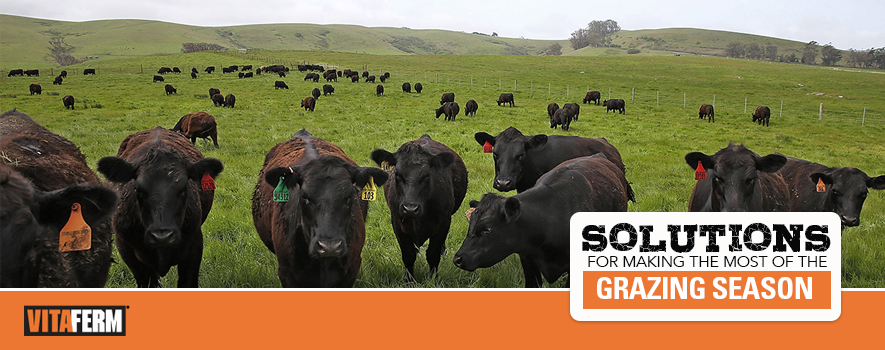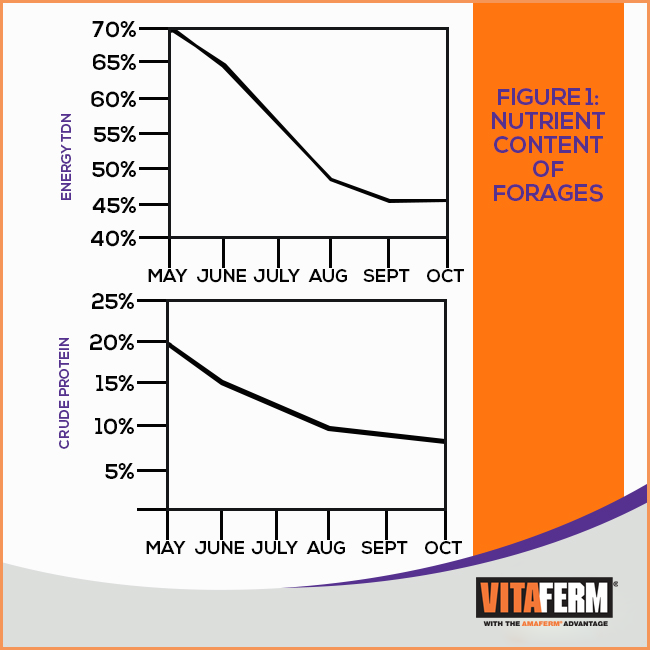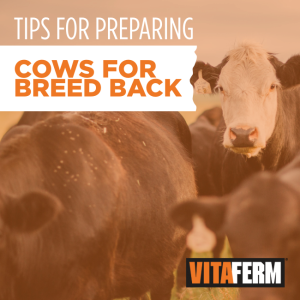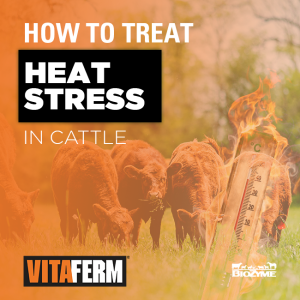
There is nothing more satisfying as a beef producer than turning cows and calves out on lush summer pastures. After a long winter, spring and early summer can offer some relief in more ways than one. During this time, cows are in peak milk production, calves are rapidly growing and forages are at their best. Typically, this is one of the few times throughout the year when a beef producer can maximize performance and production costs are traditionally at their lowest.
However, don’t discount the challenges that can come with summer grazing. Heat stress, forage quality/availability, and external parasites all deserve special considerations when managing cattle on summer ranges.
Summer Heat
We usually welcome summer time because of the warmer temperatures. These warmer temperatures along with ample moisture are what help give way to new vegetative growth and promise of renewed life. Unfortunately, this can also take its toll on our livestock on pasture. High temps can result in:
- Increased body temperature that can lower breed-back rate
- Panting/Sweating that expends energy needed for normal performance
- Decreased grazing time which results in decreased DMI
Solution:
Amaferm® has been research proven to help maintain core body temperature in extreme heat and increase DMI. As a result, cows are then able to more readily meet nutritional requirements and have increased milk production later into lactation. Additionally, VitaFerm HEAT® specifically targets heat stress by aiding in improving internal thermoregulation through improved circulation and intake modification. In other words, better circulation helps cattle to more efficiently cool themselves and consuming smaller meals more frequently throughout the day not only increases DMI, but also alleviates some of heat generated by the rumen during digestion.
 Forage Quality and Availability
Forage Quality and Availability
At turnout, lush and immature forages are abundant and highly concentrated in key nutrients needed to sustain a cow who is providing for a fast growing calf while simultaneously meeting her own needs to maintain and reproduce. However, forage quality changes on a daily basis. As a forage matures, nutrient quality decreases. Therefore, later in the grazing season forages may not be sufficient in meeting nutrient requirements for both the cow and her growing calf. Keep in mind that drought can exponentially impact forage quality and overall yields as well. When forage quality decreases as well as availability, the following occur:
- Nutrient intake drops when calves need it most
- Poor conversion and low calf ADG
- Lower conception rates
Solution:
Amaferm increases fiber digestion so more nutrients are absorbed from lower quality forages. Rumen VFA or microbial protein production is increased so more energy and protein are made available to the cow and her growing calf. Therefore, calves gain to their full genetic potential and cows maintain adequate body condition more efficiently. For calves, creep feeding or early weaning could help pay dividends in periods of nutritional short comings in a grazing scenario. BioZyme has several products that can be mixed in to creeps to meet nutrient requirements and maximize performance.
External Parasites
It is virtually impossible to completely eradicate external parasites, but there are plenty of effective management practices and/or feed additives to lessen their effects. In addition to being a nuisance, parasites such as flies, horse flies, and ticks can:
- Reduce weaning weight by 10 to 25 pounds.
- Spread Anaplasmosis which can increase mortality rates and lower production outputs.
Solution:
Many commercial “fly control” minerals run the risk of compromising nutrition because of low palatability. VitaFerm products with ClariFly® and AUREO 3G options with ample nutrient fortification and the Amaferm advantage maximize forage utilization while maintaining overall herd health and performance. Garlic, which is included in all of our HEAT products, acts as a natural insect repellant to prevent flies and ticks from biting your animals.
Summer grazing is always something beef producers look forward to after a long winter. If nutritional needs are being met during grazing/breeding season, there is the potential to increase first-service conception and milk production. Calves born during the first 21 day cycle of the calving season can outweigh their counterparts by as much as 50 pounds. If lactation is increased by only two pounds per day as a result of a higher plane of nutrition, the added nutrients could impact weaning weights by as much as 30-50 pounds. VitaFerm products with the Amaferm advantage offer a multitude of benefits to help offset problems that may arise during the grazing season and positively impact production. For assistance with your summer grazing program or challenges you may be having contact your Area Sales Manager or our nutritionists.



